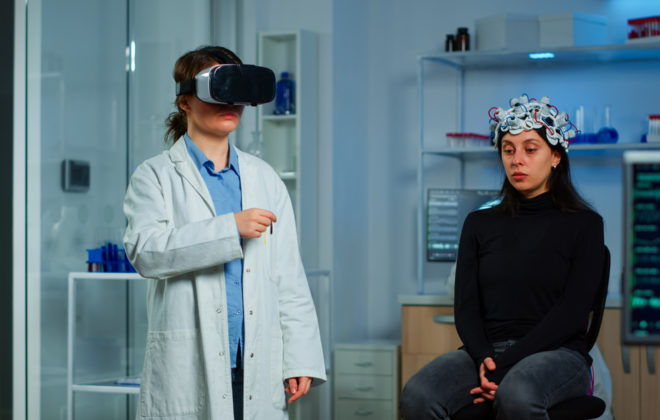Mastering Medical Proficiency: Crafting Competency-Based Training Programs in Healthcare
The demand for highly qualified individuals is never stronger in the fast-paced and always changing environment of healthcare. Competency-based training healthcare is a novel method emphasizing on the acquisition of the exact skills and information required for healthcare professionals to perform in their positions.
Unlike conventional training approaches that stress time-based learning, competency-based training gives particular competency mastery first priority, therefore assuring that healthcare professionals are completely ready to meet the challenges of their roles.
Objective
This article attempts to offer a thorough roadmap for creating successful competency-based training courses catered to the special requirements of medical practitioners. From knowing the basic elements of such initiatives to running and assessing them, this article will provide healthcare managers the means to improve the competency of their staff.
Importance
Competency-based training has a major effect on healthcare. These training courses guarantee that healthcare professionals are not only aware but also able to apply their abilities in practical circumstances by concentrating on the particular competences needed for certain positions. Improved patient care, higher efficiency, and a more flexible and strong healthcare workforce follow from this.
Understanding Competency-Based Training
☛ Definition
In healthcare, competency-based training is a methodical approach to professional development stressing the mastery of particular skills, information, and behaviors required for efficient performance of work tasks.
Competency-based training evaluates performance by the capacity to show mastery in important areas, unlike conventional time-based training, which generally counts success by hours spent in training.
☛ Components
Usually including the following elements, a well-designed competency-based training program in healthcare:
- Skills:
Technical and procedural skills needed to complete medical activities including physical exams, drug administration, or equipment operation.
- Knowledge:
Theoretically, medical ideas, practices, and protocols underlie successful practice.
- Behaviours:
Professional attitudes, ethics, and interpersonal skills that support patient care and teamwork within healthcare teams define behavior.
☛ Benefits
Professionals as well as healthcare companies stand to gain much from competency-based training in several ways including:
- Improved patient outcomes:
Competency-based training guarantees that healthcare professionals are competent in their roles, therefore improving the quality of treatment given to patients.
- Efficiency:
Well-trained in particular abilities, healthcare personnel can carry out their responsibilities more effectively, therefore lowering mistakes and enhancing flow of work.
- Customization:
Training courses can be customized to fit the particular requirements of various professions within the healthcare industry, therefore guaranteeing that every expert gets the necessary skills to excel.
Key Steps in Developing Competency-Based Training Programs
☛ Assessment of Needs
Doing an extensive needs assessment comes first in creating a competency-based training course. This is determining the particular medical skills improvement needed for various healthcare positions.
Engaging important stakeholders—such as department heads, frontline workers, and training experts—you can clearly grasp the skills, knowledge, and behaviors required for success in every level.
☛ Curriculum Design
- Framework
Designing a curriculum that fits the stated required capabilities comes next once the competencies themselves have been recognized. The curriculum should be set up to guarantee that, with well defined goals and outputs, every competency is covered by focused training sessions.
- Incorporation of theoretical and practical elements
A balanced curriculum is crucial for effective medical training. Although theoretical knowledge lays the groundwork for grasp of medical ideas, skill development depends on practical, hands-on instruction.
Combining classroom instruction with practical experiences—such as simulations, role-playing, and supervised practice—ensures that medical professionals are ready to use their knowledge in clinical situations.
- Setting benchmarks
Evaluating the success of a competency-based training program depends on well defined performance criteria. Benchmarks should be exact, quantifiable, and consistent with the competencies under instruction.
Implementation Strategies Training methods
- Interactive learning
Competency-based healthcare training is making greater use of interactive learning tools including virtual reality (VR) and simulations. These techniques let students participate in realistic, practical exercises closely reflecting real-life events. VR simulations, for instance, can replicate difficult surgical operations so that trainees may hone their abilities in a controlled setting free from patient danger.
- On-the-job training
Development of useful skills depends on including real-world experiences into training courses. By means of shadowing seasoned professionals and engaging in clinical rotations, on-the-job training offers learners the chance to apply their knowledge in real-world healthcare environments. This not only supports learning but also helps trainees develop confidence in their own talents.
- Instructor roles
One cannot stress the importance of teachers in competency-based education. Good trainers should be well qualified and deeply knowledgeable of the competencies they are imparting. They should also be adept in providing interactive, responsive to trainee demands, interesting, and engaging instruction.
- Feedback mechanisms
Competency-based training depends critically on constructive feedback. There must be a strong feedback system in place to give trainees consistent, thorough performance evaluations.
These comments should be targeted on assisting trainees in developing their knowledge and abilities, be particular and practical. Encouragement of lifelong learning and feedback systems serve to guarantee that trainees reach the necessary degree of competence.
Evaluation and continuous improvement
☛ Competency assessment
It’s crucial to find out whether learners possess the required competences following their completion of training. Practical tests, peer reviews, and performance assessments are just a few of the several methods and approaches one may employ for this goal.
These tests should be made to evaluate both theoretical knowledge and practical ability, thereby guaranteeing that trainees are completely ready to carry out their responsibilities in a clinical environment.
☛ Continuous improvement
- Data-driven approaches
A hallmark of good medical education is ongoing progress. Data on trainee performance helps healthcare companies find areas where their training initiatives may be strengthened and corrected. This data-driven strategy guarantees that programs remain relevant and efficient by allowing for ongoing improvement of training approaches.
- Adaptation to changing standards
A dynamic sector, healthcare is constantly evolving with new standards, technology, and best practices developing often. Competency-based training courses have to be flexible enough to fit these developments since curricula and training strategies are changed to mirror the most recent developments. Maintaining current industry developments helps healthcare companies make sure their staff stays front and foremost in medical practice.
Case studies and best practices
☛ Success stories
Johns Hopkins Medicine is among the most striking illustrations of effective competency-based training. Johns Hopkins has greatly improved surgical results and lowered the post-operative complication rate by putting in place a thorough training program targeted on acquiring certain competences in surgical techniques.
The success of this program rests on its thorough requirements assessment, focused curriculum development, and continuous feedback loop—which together guarantee that learners reach the best degrees of competency.
☛ Lessons learned
Developing competency-based training courses requires awareness of typical mistakes as well. One of the main lessons gained from effective initiatives is the need of matching training with practical requirements.
Programs less likely to succeed are those that are very theoretical or neglect the pragmatic demands of medical practitioners. Trainees should also be involved in the design and assessment of training courses so that their comments may be included into efforts at ongoing development.
Leveraging Technology in Training
- Digital platforms
Support of competency-based training in healthcare depends critically on digital platforms. MedTrainer and other software solutions give complete training management systems that let medical companies track, implement, and evaluate training initiatives.
These systems give trainees flexibility so they may access evaluations and resources from anywhere, therefore facilitating the accommodation of many learning styles and schedules.
- Virtual reality and simulation
Virtual reality and simulation in healthcare training programs is revolutionizing the way competencies are built. Unlike practical situations, virtual reality enables students to practice in actual stressful conditions, including emergency rooms or techniques. The particularity of VR as an educational environment is that it allows learners safe practice repetitions in order to gain confidence and improve their skills.
Regulatory Considerations and Compliance
- Accreditation
Ensuring that competency based training courses meet the requirements of the industry is primarily the function of accreditation. However, the standards for the quality and effectiveness of training are set by such accreditation agencies as the Accreditation Council for Graduate Medical Education (ACGME).
Thus, to ensure the accreditation and to demonstrate their commitment to quality, the healthcare institutions need to ensure that their training courses meet these requirements.
- Compliance
Another component of competency-based approach is compliance with rules at the district and national levels. To ensure compliance with professional organizations’ and government agencies’ stated regulatory requirements, healthcare companies must assess the alignment of training courses with such regulatory statements. This includes ensuring that evaluations are conducted fairly and impartially, as well as ensuring that all necessary competencies are included and addressed in training courses.
Implementing Healthcare Professional Development
Creating and implementing a competency-based training program for healthcare is a challenging but worthwhile task. By concentrating on the specific skills required for each role, healthcare companies can ensure that their staff is not only competent but also highly qualified and capable of providing the best quality of care.
As healthcare continues to evolve, the adoption of competency-based training will be crucial in fostering healthcare professional development, producing a competent and adaptable workforce ready to meet the demands of modern healthcare with confidence and expertise.
Healthcare executives and training coordinators are encouraged to assess their current training strategies and consider adopting competency-based techniques to enhance professional growth. A well-trained, competent workforce will shape the future of healthcare-let’s work together to build it.
Take the first step towards excellence—evaluate and adopt competency-based approaches in your training strategies to empower your healthcare team today only!
Blog Categories
- 3D Animation (5)
- Company News (2)
- Design Graphics (1)
- Healthcare Operations (7)
- Industry News (9)
- Medical Training (1)
- Sales Enablement (5)
- Software Developing (3)
- Virtual/Augmented Reality (11)




